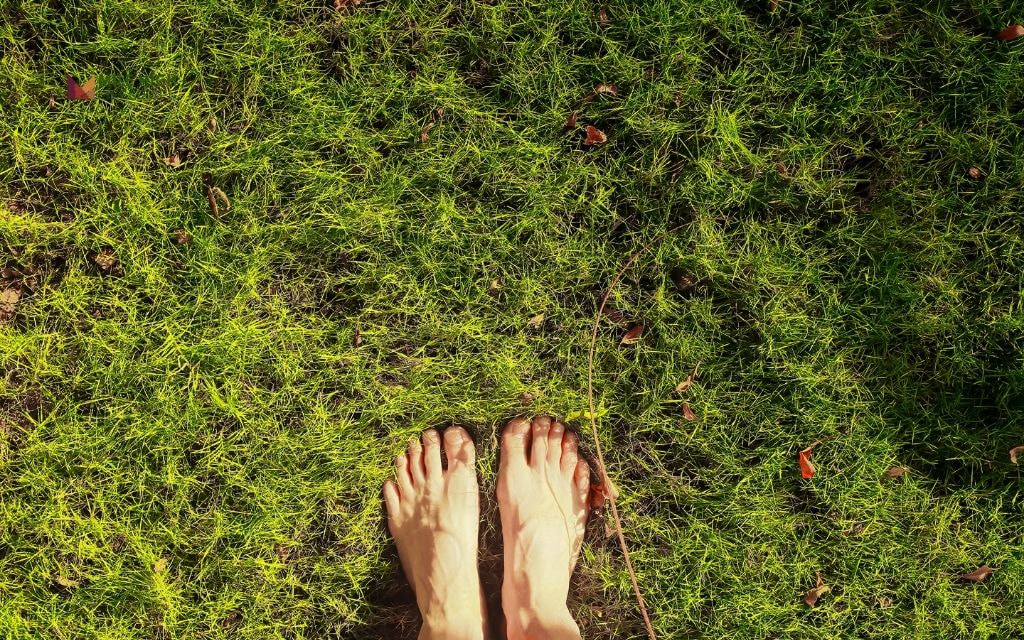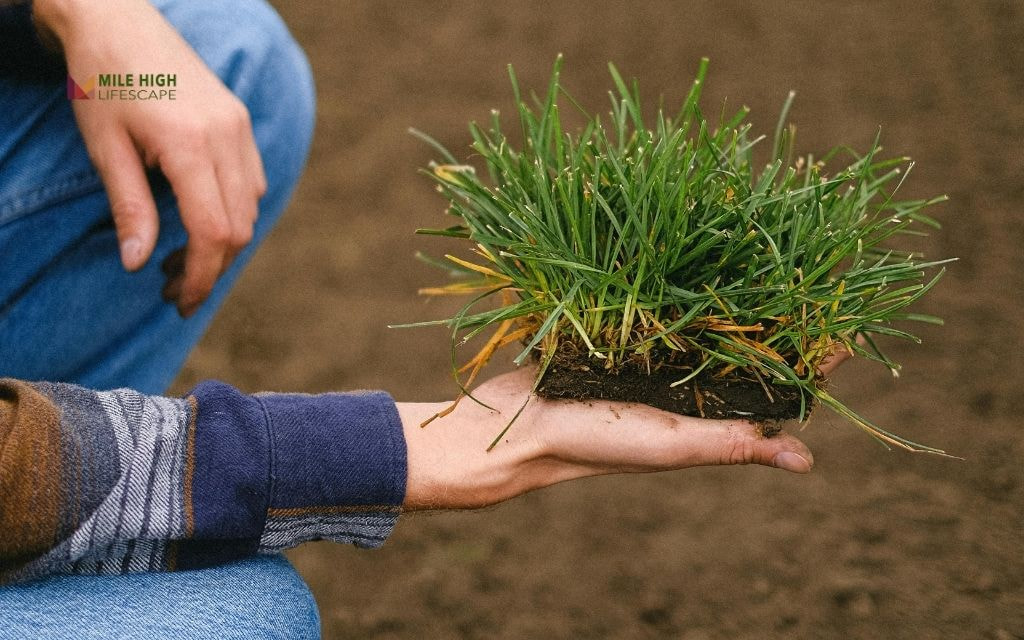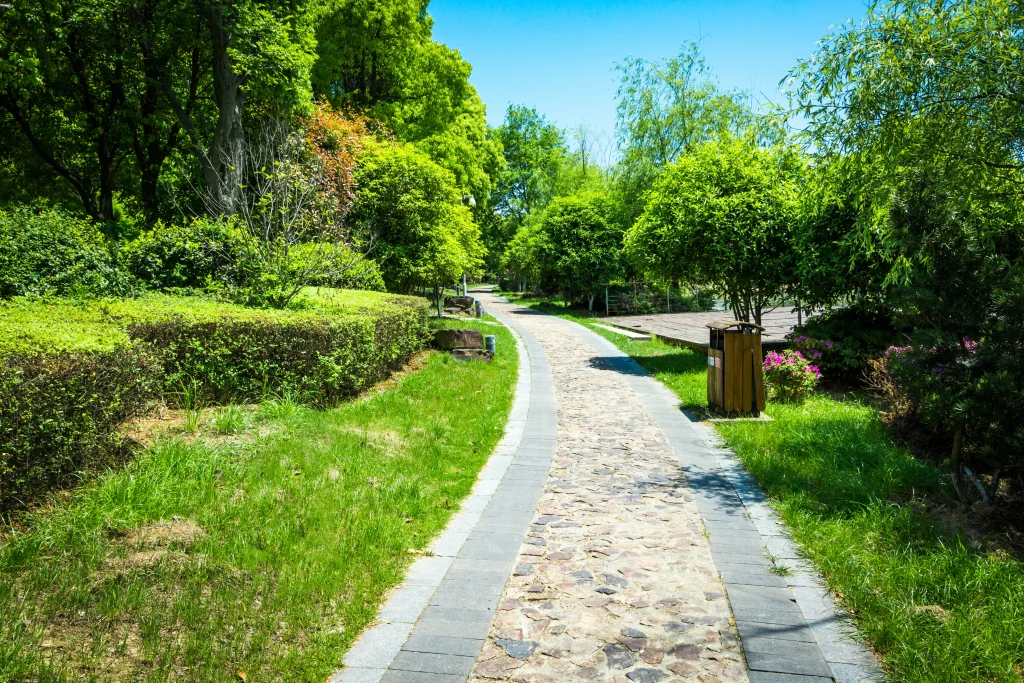How long after installing sod can you walk on it? It’s generally recommended to wait at least 2 weeks before you can walk on it. This allows the roots to establish themselves in the soil and prevents damage to the young plants. But in Denver’s unique climate, several factors influence this timeline.
This waiting period represents a critical phase in your lawn’s development. Despite its green, finished appearance, the new sod lacks the root structure necessary to withstand foot traffic. The sod pieces you see are essentially transplanted grass sections that must form entirely new root systems in your soil.
In this guide, we’ll provide clear timelines calibrated for Denver’s growing conditions, reveal the telltale signs that indicate when your sod is truly ready for traffic, and offer practical advice for protecting your lawn.
How Long After Installing Sod Can You Walk On It?
The general guideline for Denver homeowners is to wait at least 2 weeks before walking on newly installed sod. However, local conditions including soil composition, weather patterns, and seasonal timing can extend this waiting period.
For best results with your new lawn, follow this timeline:
- Week 1: Absolutely no foot traffic. During these critical first 7 days, your sod remains essentially disconnected from the soil beneath. Any pressure can disrupt soil contact and prevent proper rooting, particularly in Denver’s sometimes challenging soil conditions.
- Week 2: Light, necessary maintenance only. Brief steps to adjust sprinklers or perform essential care are acceptable, but walk with extreme care – distribute your weight evenly, avoid pivoting, and limit time on the grass.
- Week 3: Regular foot traffic becomes acceptable, but only if your sod shows clear signs of rooting. Test an inconspicuous corner by gently tugging – if you feel resistance, the rooting process has begun.

Factors That Impact Your Sod’s Establishment Time
Several key factors influence how quickly your new sod establishes in Denver’s unique environment:
Sod Type
The grass variety in your sod significantly affects rooting speed. Kentucky Bluegrass, the most common choice for Denver lawns, typically requires 2-3 weeks for initial root establishment.
This cool-season grass performs well in our climate but establishes more slowly than some alternatives. Warm-season grasses (rarely used in Denver) would require longer establishment periods due to our shorter growing season.
Soil Preparation
The foundation beneath your sod impacts root development speed. Properly tilled, leveled soil with appropriate organic content promotes faster, more uniform rooting.
Compacted or poorly prepared soil creates physical barriers to root penetration, extending the establishment period by days or even weeks.
Weather Conditions
Denver’s high-altitude environment presents specific challenges for new sod. Intense UV exposure, low humidity, and frequent wind accelerate moisture loss from new sod.
Summer installations may require more frequent watering to prevent drying, while cooler fall temperatures slow the biological processes of root development. Unexpected temperature fluctuations can further stress new sod and extend the establishment timeline.
Watering Schedule
Consistent, appropriate irrigation impacts root development speed. New sod requires frequent watering that gradually decreases as roots establish.
Inconsistent irrigation creates drought stress that forces the grass to recover rather than establish, adding days or weeks to the rooting timeline.
Denver’s typically dry climate demands particular attention to maintaining proper moisture levels throughout the establishment period.
Installation Quality
Professional installation techniques significantly affect establishment speed. Tightly fitted seams prevent edge drying, proper rolling ensures soil contact, and immediate watering prevents transplant shock.
Gaps between sod pieces, insufficient rolling, or delayed irrigation all extend the time needed before the lawn can handle traffic.
Quality installation creates optimal conditions for rapid establishment in Denver’s challenging growing environment.
How Long Does It Take For Sod To Take Root?
New sod undergoes a predictable rooting process that determines when it can withstand traffic:
- Phase 1 (Days 1-7): Sod begins absorbing moisture and recovering from transplant shock. No visible rooting occurs yet, making the sod vulnerable to displacement.
- Phase 2 (Days 8-14): Initial roots begin penetrating the soil. These roots remain shallow but provide the first real connection to your lawn’s foundation.
- Phase 3 (Weeks 3-5): Deeper root systems develop, eventually reaching several inches into the soil. This provides the stability needed to withstand normal foot traffic.
To check root development, perform a gentle tug test after the second week. Carefully lift a corner in an inconspicuous area – resistance indicates rooting has begun. In Denver’s cooler seasons or in areas with partial shade, this process may take an additional week.

Why You Shouldn’t Walk on Your Grass Too Early?
Walking on new sod before adequate root establishment creates several problems that compromise both its appearance and long-term health. Understanding these risks helps reinforce the importance of patience during the establishment period.
Dislodged Sod
Foot traffic on unrooted sod breaks the soil-to-sod contact necessary for root development. Even slight movement creates gaps between the sod and soil beneath.
In Denver’s dry climate, these gaps allow rapid moisture loss exactly when the grass needs consistent water access. Once dislodged, the affected sections must restart the establishment process, adding weeks to your timeline.
Soil Compaction
Weight on new sod compresses the soil structure beneath, particularly with Denver’s often clay-heavy soils. This compaction restricts oxygen flow to developing roots and creates physical barriers that impede root penetration.
The resulting dense soil patches may never fully recover without mechanical intervention, creating permanent weak spots in your lawn.
Footprint Damage
Pressure from footsteps on unestablished sod creates depressions that remain visible for months or even permanently. These depressions disrupt both the aesthetic appearance and the functional drainage of your lawn.
In extreme cases, the compressed areas develop into brown, dead patches as the damaged grass fails to recover from the disruption to its root development.
Long-Term Establishment Delays
Perhaps most significantly, premature foot traffic extends the overall establishment timeline by weeks or even months.
The affected areas divert energy to recovery rather than root development, creating an uneven establishment pattern across your lawn.
This patchwork development often results in inconsistent color, texture, and drought resistance that persists long after installation.

5 Clear Signs Your Sod Is Ready for Foot Traffic
Your sod is ready for regular use when you observe these indicators:
- The sod resists pulling when gently tugged from a corner
- Grass height reaches 3-4 inches (indicating active growth)
- No yellowing or browning remains along the seams
- The surface feels firm underfoot, not spongy
- White roots are visible when you carefully peek beneath the edge
In Denver’s climate, these signs typically emerge between weeks 3-4 during summer installations but may take longer during spring or fall.
Special Considerations for Kids, Pets, and Equipment
Different activities require different waiting periods:
- Children: Kids should avoid the new lawn until week 3 at minimum, and even then, discourage concentrated play in one area.
- Pets: Dogs challenge new sod with concentrated traffic patterns and urine spots. Wait until full root establishment (4+ weeks) before allowing regular pet access, and create designated paths or areas during the transition.
- Lawn Equipment: Postpone mowing until the sod has rooted and reaches 3.5-4 inches in height, typically around week 3. Use a sharp, properly adjusted mower and avoid sharp turns that can tear the sod.
Tips for Walking on New Sod (When It’s Safe)
Once your sod shows signs of adequate rooting, follow these practices to minimize stress:
- Wait for dry conditions before walking on newly rooted sod
- Step with even, distributed weight rather than pivoting or dragging feet
- Create temporary stepping stone paths for high-traffic routes
- Limit activity duration during the first weeks of access
- Establish designated play areas away from freshly sodded sections
- Consider mowing before opening the lawn to family use, as shorter grass withstands traffic better
Conclusion
Your new sod represents a significant investment in your Denver home’s value and appearance. A few weeks of restricted access ensures years of enjoyment from your lawn. Don’t rush this critical establishment period – the difference between properly rooted sod and prematurely damaged turf becomes increasingly apparent over time.
At Mile High Lifescape, we understand Denver’s unique lawn challenges. Our team offers sod installation and post-care visits to check sod health and provide customized guidance for your specific property conditions.
Frequently Asked Questions (FAQs)
What happens if you walk on sod too early?
Walking on new sod too early damages the developing root system. This disruption deprives the grass of water and nutrients, causing it to struggle, wilt, and potentially die. The damage creates long-term problems that may never fully resolve without replacement.
How long should you stay off of new sod?
Stay off newly installed sod for at least 2 weeks. This allows roots to establish and firmly attach to the soil, preventing damage and ensuring a healthy lawn. In Denver’s climate, a full 3 weeks often produces better results, especially during cooler seasons.
Can you walk on a newly sodded lawn?
Walking on sod before its roots establish reduces its survival chances and compromises your investment. Brief, careful steps for essential maintenance after the first week may be necessary, but minimize all traffic until proper rooting occurs.
How long does it take for sod to take root?
Sod typically takes 2-6 weeks to fully root. Initial shallow roots form within 10-14 days. The timeline varies based on soil preparation, seasonality, and sod quality. Denver’s altitude and climate may extend this process, particularly during fall installations.
Should I rake leaves off new sod?
Remove leaves from new sod promptly. Leaf accumulation blocks light, creates rot conditions with damp, dark environments, and smothers weaker plants. This is especially critical for new lawns, as young grass dies without adequate light more quickly than established turf.
